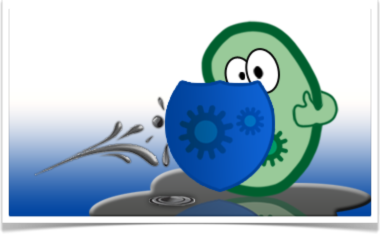Team:TU Delft/Project/tolerance
From 2010.igem.org
(Difference between revisions)
(→Survival) |
(→Survival) |
||
| Line 7: | Line 7: | ||
Our cells are meant to work in tailing waters and oil-spills; a high salt concentration is expected. Due to this fact we need to confer halotolerance to our cells. Moreover, two-phase systems are difficult to work with due to the presence of high levels of organic solvents in the environment. Which is the main reason for design a solvent-tolerant cell. | Our cells are meant to work in tailing waters and oil-spills; a high salt concentration is expected. Due to this fact we need to confer halotolerance to our cells. Moreover, two-phase systems are difficult to work with due to the presence of high levels of organic solvents in the environment. Which is the main reason for design a solvent-tolerant cell. | ||
| - | + | ||
| - | + | ||
| - | + | ||
<html><center><img src="https://static.igem.org/mediawiki/2010/0/00/TU_Delft_project_navigation.jpg" usemap="#projectnavigation" border="0" /></center><map id="projectnavigation" name="projectnavigation"><area shape="rect" alt="Characterization" title="" coords="309,3,591,45" href="https://2010.igem.org/Team:TU_Delft#page=Project/tolerance/characterization" target="" /><area shape="rect" alt="Results" title="" coords="609,3,891,44" href="https://2010.igem.org/Team:TU_Delft#page=Project/tolerance/results" target="" /><area shape="rect" alt="Parts" title="" coords="9,3,290,44" href="https://2010.igem.org/Team:TU_Delft#page=Project/tolerance/parts" target="" /></map></html> | <html><center><img src="https://static.igem.org/mediawiki/2010/0/00/TU_Delft_project_navigation.jpg" usemap="#projectnavigation" border="0" /></center><map id="projectnavigation" name="projectnavigation"><area shape="rect" alt="Characterization" title="" coords="309,3,591,45" href="https://2010.igem.org/Team:TU_Delft#page=Project/tolerance/characterization" target="" /><area shape="rect" alt="Results" title="" coords="609,3,891,44" href="https://2010.igem.org/Team:TU_Delft#page=Project/tolerance/results" target="" /><area shape="rect" alt="Parts" title="" coords="9,3,290,44" href="https://2010.igem.org/Team:TU_Delft#page=Project/tolerance/parts" target="" /></map></html> | ||
Revision as of 14:46, 22 October 2010
Survival
Our goal was to develop a cellular chassis capable of convert hydrophobic chemicals (alkanes) and use them as sole carbon and energy source. However, in order to have a cell capable of making these kinds of bioconversions it was necessary to think about the environment in which these cells will be growing. The two main challenges found were salinity and organic solvent toxicity.
Our cells are meant to work in tailing waters and oil-spills; a high salt concentration is expected. Due to this fact we need to confer halotolerance to our cells. Moreover, two-phase systems are difficult to work with due to the presence of high levels of organic solvents in the environment. Which is the main reason for design a solvent-tolerant cell.

 "
"
